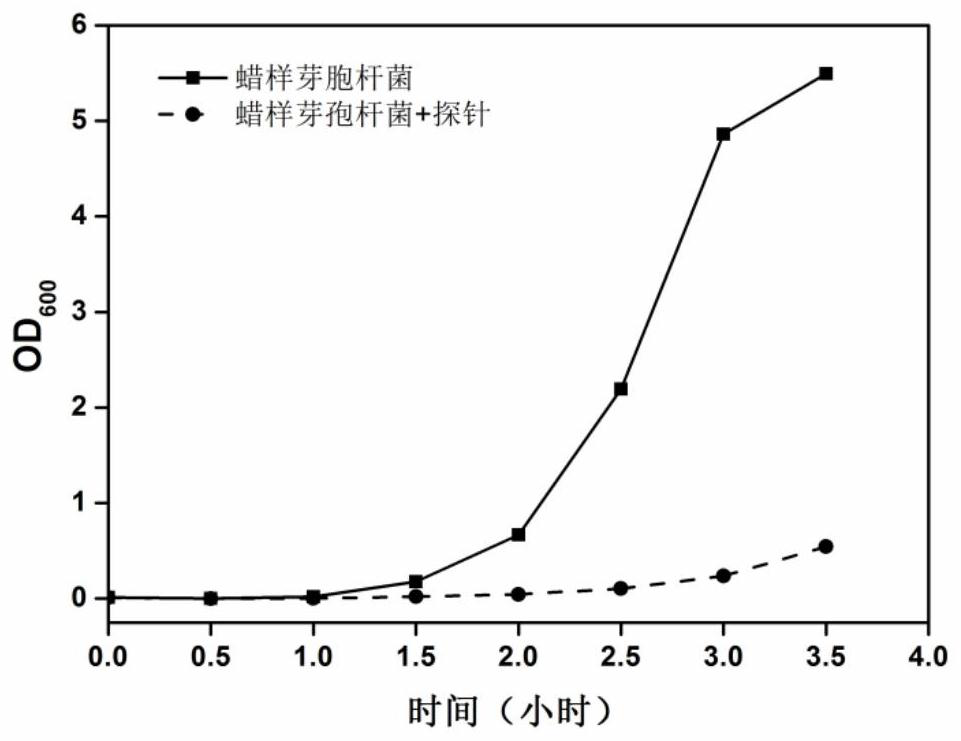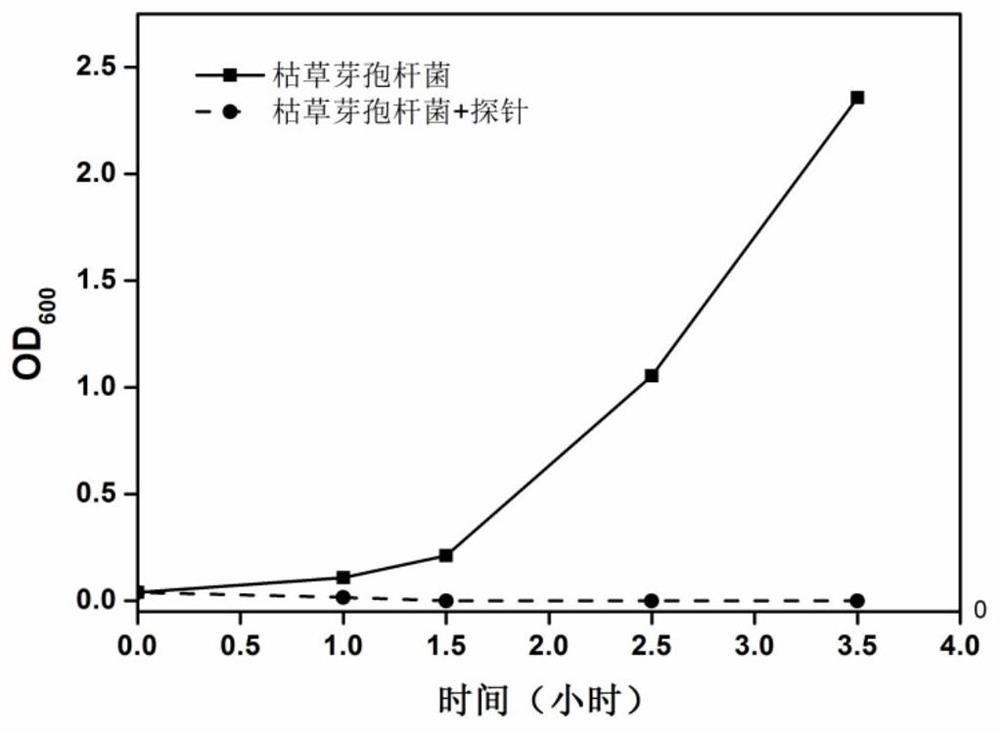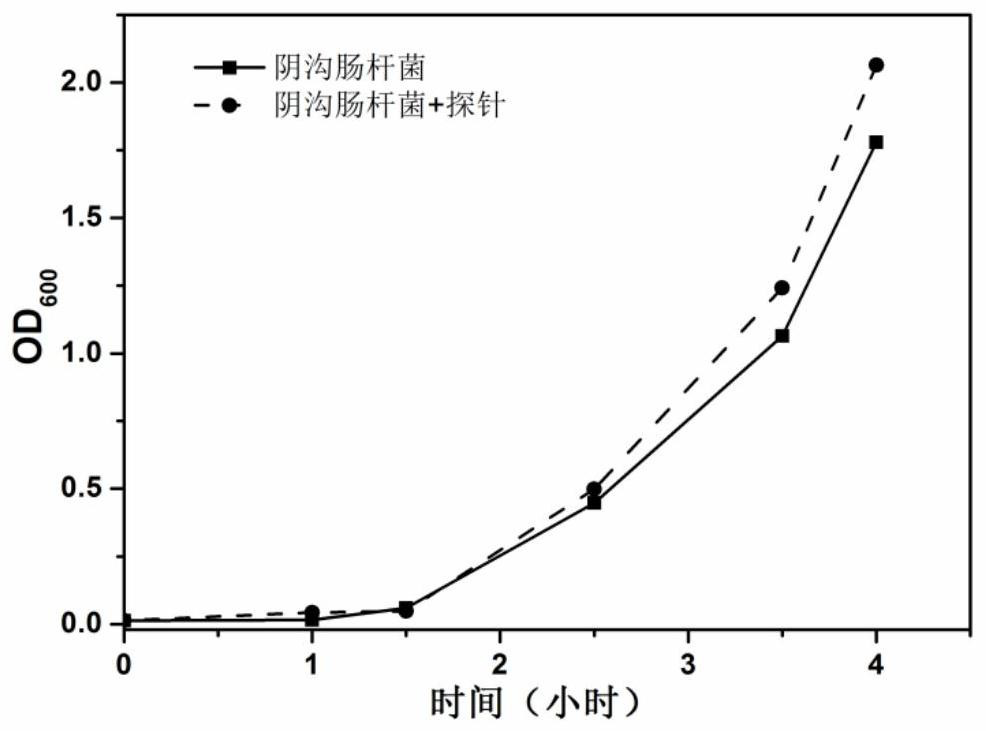Bacteriostasis method for selectively inhibiting gram-positive bacteria
A Gram-positive bacteria, selective technology, applied in the direction of pharmaceutical formulations, organic active ingredients, medical preparations containing active ingredients, etc., can solve the problems of complex synthesis and strong toxicity
- Summary
- Abstract
- Description
- Claims
- Application Information
AI Technical Summary
Problems solved by technology
Method used
Image
Examples
Embodiment 1
[0033] Determination of the minimum inhibitory concentration of PI-1 on different bacterial growth
[0034] From the rapid velococci, Bacillus, Bacillus, Rucfacial Sapoccus, and Sapallococcus S. vectors, respectively, 37 ° C shaker, 37 ° C shake the bed, the second day, the bacterial liquid is transferred. OD in 5 ml lb medium, 37 ° C shaker culture to the bacterial liquid 600 == 0.5, dilution 100 times to get OD 600 = 0.005 bacterial liquid. The 500 μl of bacteria was added to the N [mu] m, and the final concentration was 40 μm, 20 μm, 10 μm, 5 μm, 2.5 μm, 1.25 μm, 0.625 μm, 0.3125 μm, 37 ° C shaker, and observed bacterial growth after 24 hours. For Gram-negative bacteria, the final concentration of Pi-1 is 160 μm, 80 μm, 40 μm, 20 μm, 10 μm, 5 μm, 2.5 μm, 1.25 μm, respectively, 2 μm, 1.25 μm, respectively.
[0035] During the experiment, two sets of parallel experiments were set, and the three sets of controls were set. The control group was: 500 μl of bacterial liquid; 500 μl o...
Embodiment 2
[0040] Study on the inhibition of Wax Nakhococcus Pi-Strans
[0041] 50 μl of the bacterial liquid of 50 μl of wax spurs was added to 5 ml lb medium, and overnight culture was cultured. Take 10 mLLB medium to add bacterial liquid, the initial concentration of the gemmia is OD 600 = 0.01, then subjected to two test tubes. One of the test tubes was added to the PI-2 (final concentration 5 μm), and the other test tube was added to the same volume of DMSO as a control, 37 ° C shaker culture, interval of half an hour genus OD 600 value. Growth by monitoring the growth of wax spurobacillus figure 1 .
[0042] figure 1 In the case of the addition of the same volume DMSO, the wax sprrier is rapidly proliferated, and the bacteria added to PI-2 is substantially non-proliferation, indicating that the addition of PI-2 inhibits the growth of wax sample.
Embodiment 3
[0044]Pi-2 on the inhibition of Bacillus subtilis
[0045] 5 ml lb medium was added 50 μl of Bacillus subtilis, overnight culture. Take 10 mLLB medium to add bacterial liquid, the initial concentration of the gemmia is OD 600 = 0.01, then subjected to two test tubes. One of the test tubes was added to the PI-2 (final concentration 5 μm), and the other test tube was added to the same volume of DMSO as a control, 37 ° C shaker culture, interval of half an hour genus OD 600 value. Growth by monitoring the growth of Bacillus subtilis figure 2 .
[0046] figure 2 Bacillus subtilis rapidly proliferate in the case of adding the same volume DMSO, and the bacteria added to PI-2 substantially does not proliferate, indicating that the addition of Pi-2 inhibits the growth of Bacillus Bacillus.
PUM
| Property | Measurement | Unit |
|---|---|---|
| separation | aaaaa | aaaaa |
Abstract
Description
Claims
Application Information
 Login to View More
Login to View More - R&D
- Intellectual Property
- Life Sciences
- Materials
- Tech Scout
- Unparalleled Data Quality
- Higher Quality Content
- 60% Fewer Hallucinations
Browse by: Latest US Patents, China's latest patents, Technical Efficacy Thesaurus, Application Domain, Technology Topic, Popular Technical Reports.
© 2025 PatSnap. All rights reserved.Legal|Privacy policy|Modern Slavery Act Transparency Statement|Sitemap|About US| Contact US: help@patsnap.com



